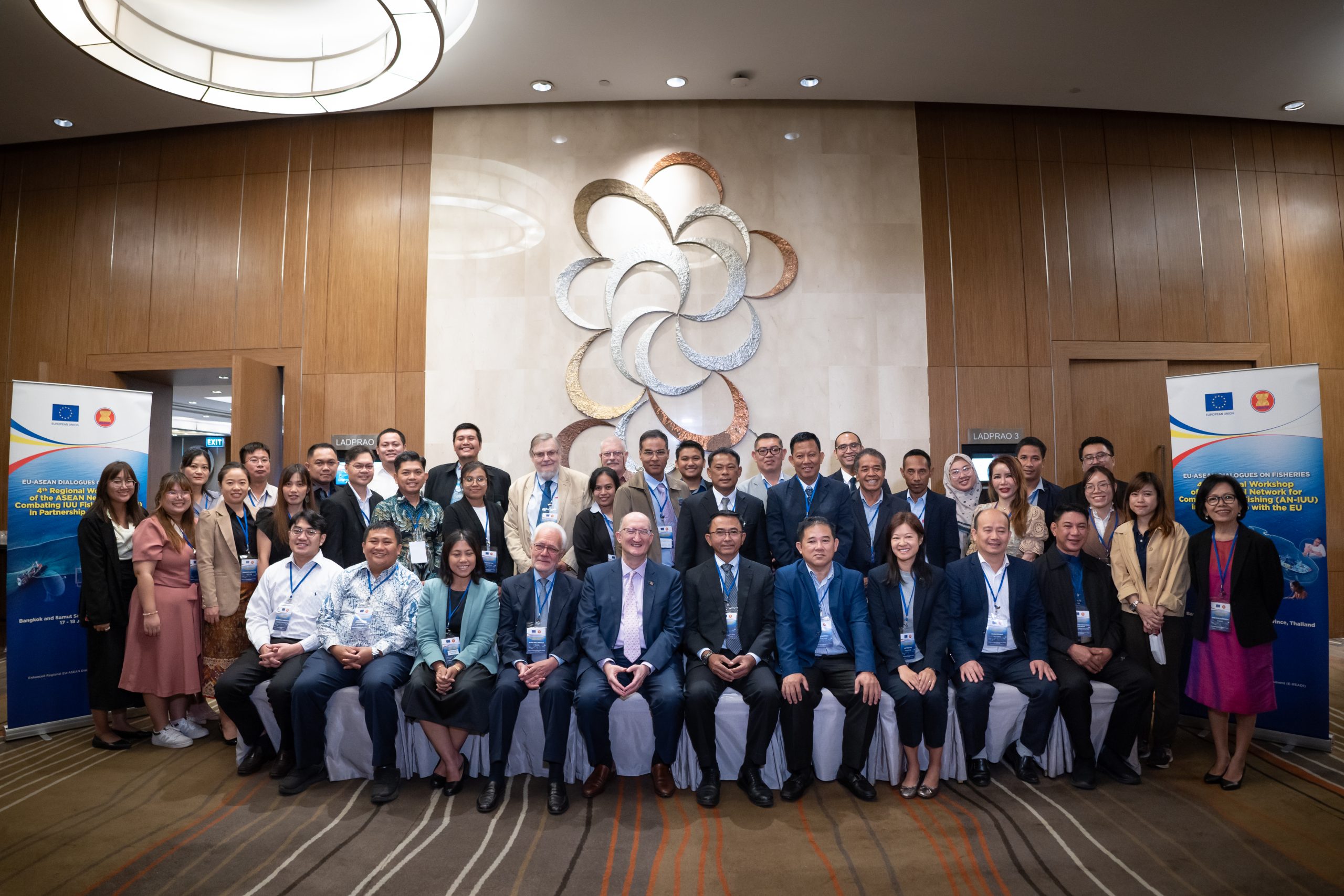
Illegal, Unreported, and Unregulated (IUU) fishing is a significant issue in the ASEAN region, posing critical environmental and human security threats. This article explores the multifaceted impacts of IUU fishing and argues for addressing it through a securitization framework to prioritize it as a regional and global concern.
Key Statistics and Economic Impacts of IUU Fishing
The fisheries sector employs over 10 million individuals across the ten ASEAN member countries, which collectively contribute 20% to 25% of global marine fish production, amounting to 115 million tonnes annually (Lee & Viswanathan, 2020; FAO, 2024). With global food fish consumption projected to rise to 21.2 kg per capita by 2032 (FAO, 2023b), the legitimate fishing industry struggles to meet demand, while IUU fishing thrives with an estimated global value of $10 billion to $23.5 billion (t Sas-Rolfes et al., 2019).
The consequences of IUU fishing extend beyond economic losses. It leads to biodiversity decline, habitat destruction, and ecosystem degradation. Human trafficking, forced labor, and slavery are prevalent in IUU fishing operations, often intertwined with drug and arms trafficking (Telesetsky, 2014; Sumaila & Bawumia, 2014). These interconnected issues highlight IUU fishing as a critical challenge for both environmental and human security.
The Securitisation Framework for IUU Fishing
The Copenhagen School’s securitization theory emphasizes identifying shared perceptions of existential threats and mobilizing resources to address them (Buzan et al., 1998). Traditionally, security concerns have focused on state sovereignty and military power. However, non-traditional security threats like health pandemics, food insecurity, and environmental crimes, including IUU fishing, have emerged as pressing issues (Latif & Khan, 2011).
The UN’s International Plan of Action to Prevent, Deter, and Eliminate IUU Fishing (IPOA-IUU) categorises IUU fishing into illegal, unreported, and unregulated activities. Globally, it causes an annual loss of 11 to 26 million tonnes of fish (Suherman et al., 2020). ASEAN nations, including Indonesia, Malaysia, and Thailand, report significant economic losses and environmental damage, such as the destruction of coral reefs valued at $20 billion (Chapsos & Hamilton, 2018).
Case Studies: IUU Fishing in ASEAN Countries
- Indonesia Indonesia’s annual IUU fishing losses are estimated at $3 billion (Chapsos & Hamilton, 2018). Despite intensified monitoring and enforcement in 2024, illegal fishing remains prevalent, often involving foreign fishing fleets (KKP, 2024a). Legal measures such as vessel sinking are being revised to minimize environmental impacts (Rizky, 2024).
- Malaysia Malaysia’s waters face persistent IUU fishing, exacerbated by destructive fishing methods and corruption at maritime borders (Sato, 2010). The lack of detailed loss assessments underscores the need for robust enforcement and international cooperation.
- Thailand Thailand’s efforts to combat IUU fishing are hindered by ongoing human trafficking and forced labor in the fisheries sector. Despite receiving a “yellow card” warning from the EU in 2015, policy implementation challenges persist (EJF, 2021).
Policy Gaps and Recommendations
ASEAN’s policy frameworks, such as the Regional Plan of Action to Combat IUU Fishing (RPOA-IUU) and the ASEAN Network for Combating IUU Fishing (AN-IUU), focus on sustainable fisheries but lack robust enforcement mechanisms. To address these gaps, ASEAN must:
- Strengthen Labour Protections: Implement measures to combat forced labor and human trafficking in the fisheries sector.
- Enhance Regional Cooperation: Promote joint surveillance and reporting mechanisms to prevent unauthorized fishing activities.
- Align with International Frameworks: Integrate global initiatives like the UN Code of Conduct for Responsible Fisheries and Marine Protected Areas into ASEAN strategies.
- Prioritise Environmental Sustainability: Minimise subsidies that encourage overfishing and promote ecosystem conservation.
- Improve Enforcement Capacity: Address challenges such as insufficient maritime patrolling and policy misalignment with local communities.
Conclusion
IUU fishing threatens ASEAN’s marine biodiversity, depletes resources, and perpetuates human rights violations. Addressing it through a securitization framework can elevate its political importance, ensuring prioritized resource allocation. ASEAN’s commitment to regional and international cooperation, alongside strengthened enforcement and sustainability measures, is essential to protect marine ecosystems and secure livelihoods. By recognizing IUU fishing as an environmental and human security issue, ASEAN can achieve long-term prosperity and ecological balance.
